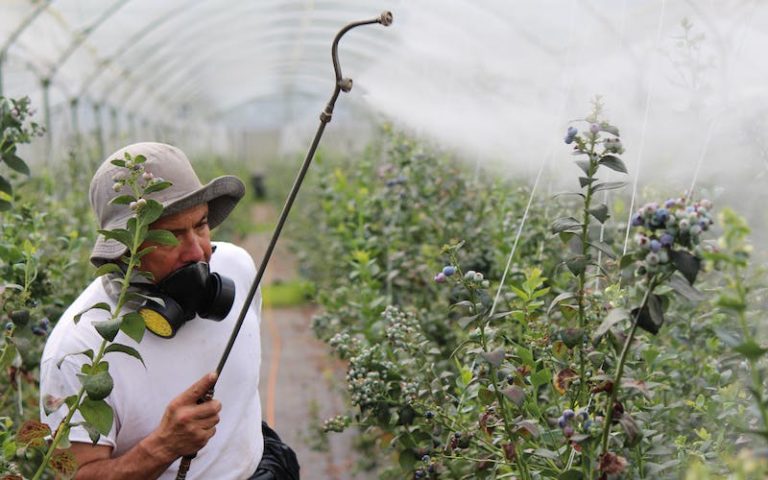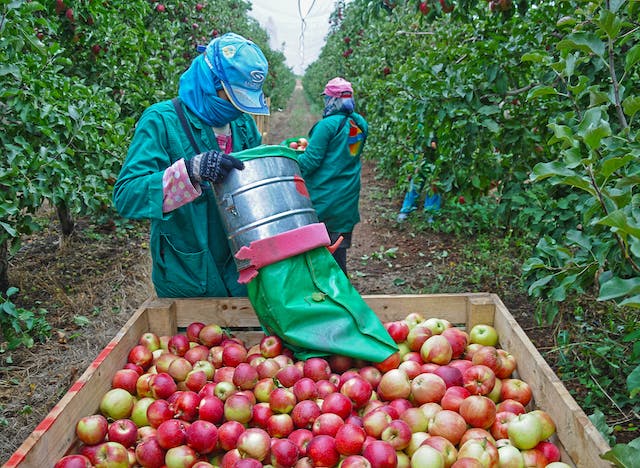
[ad_1]
Journalists are tasked with the job of exploring ugly truths. While there’s a lot to love about legal cannabis, there are some unpleasant realities when it comes to commercial cultivation. The National Library of Medicine identified more than 350 pesticides that can be used on cannabis. Some are approved for use on fruits and vegetables, but there’s little research on what happens when those substances are ignited and inhaled.
Research published in 2019 by the National Center for Biotechnology Information noted, “Currently no research exists on the toxicity of pyrolyzed pesticides in humans from smoking cannabis.” This industry is asking policymakers and consumers to consider cannabis a medicine, yet research on inhaled pesticides is nonexistent. Regulators from California to Maryland are creating rules with huge implications for their fellow citizens and one question is becoming increasingly important: Which pesticides, if any, are permissible in a smokable substance?
Overlooked and Unregulated
Cannabis & Tech Today spoke with Kim Stuck, founder and CEO of Allay Consulting and a former Colorado cannabis regulator. She’s using her years of experience in regulations to offer advisory services to cannabis companies across the country. When she helped create Colorado’s earliest regulations for adult-use cannabis, she admits some areas were overlooked. “When I was a regulator, the first set of regulations didn’t have any pesticide testing. We didn’t even think about pesticides being a contaminant,” Stuck shared. She added, “We had to change the regulations to reflect that, to make sure the product was safe.”
Public health is a concern in the cannabis space. A lack of federal oversight means each state is stitching together its own rules. While lawmakers are carefully planning how to earn revenue by taxing the industry, some are failing to enact effective health and safety regulations. “There are a lot of states that are not taking public health seriously when it comes to cannabis,” Stuck confided.
Legalized states across the country are encountering many of the same problems with pesticide contamination. Washington, Vermont, and Nevada issued recall notices to manufacturers in 2023. In Washington, state officials found DDE in samples collected from grows along a five-mile stretch of the Okanogan River. The substance is a chemical remnant of DDT, a cancer-causing pesticide banned in the U.S. in the early 70s.

DDE is not one of the 59 pesticides banned by the Washington State Liquor and Cannabis Board. Why? Because it’s not a pesticide sprayed on crops. It was pulled out of the ground by pot plants, one of nature’s most effective soil cleaners. Apple orchards formerly lined that stretch of the Okanogan River. Forty years ago, orchards were treated with DDT. Visually, those lush farmlands were perfectly healthy, but a chemical analysis would say otherwise. It’s only cannabis that could pull up the dormant chemicals, much to the horror of unsuspecting growers and consumers.
Whether it’s unknown pollutants or commonly used agricultural pesticides not approved for cannabis, contaminated products are springing up from coast to coast. In Vermont, regulators recalled a batch of flower after a citizen reported headaches and nausea. Lab results tested positive for Eagle 20, a pesticide approved for many fruits and vegetables but not for cannabis. An investigation is underway to determine how the flower hit shelves without undergoing Vermont’s rigorous testing requirements and cannabis registration process.
Inhalation Versus Ingestion
Inhaled pesticides interact with the body differently than when ingested. Michelle Perro, a former pediatrician and co-founder of the non-profit GMO Science, told BBC News that early symptoms of pesticide exposure can include headaches, nausea, dizziness, and respiratory secretion. She added, “Exposure by inhaling pesticides through our lungs can be more toxic because our gut contains microbes that help to detoxify pollutants.”
Fungicides can also be altered by combustion and inhalation. Myclobutanil, a common fungicide, turns into hydrogen cyanide when heated. Hydrogen cyanide is a toxic gas, the same substance used during the atrocities at Auschwitz. Many states are now prohibiting its use on cannabis. Sulfur, a popular treatment for powdery mildew, is not recommended for treating cannabis — but few states prohibit its use. When heated, it becomes sulfur dioxide, a colorless gas that reacts with the moisture of mucous membranes to form sulfurous acid, a severe irritant according to the Agency for Toxic Substances and Disease Registry. Inhalation can cause sneezing, coughing, throat and lung irritation, trouble breathing, and even lung spasms. Repeated exposure can cause loss of smell, headache, nausea, and dizziness.

New Mexico does not require testing for the presence of sulfur in cannabis. Mountaintop Extracts, a cannabis concentrate company based in Albuquerque, NM, implemented a sulfur-testing procedure based on a standard created for the wine industry in Northern California. Owners Jen and Eric Merryman quickly realized some of the flower they received to process into concentrates contained sulfur. Thanks to their testing procedures, they send back any product tainted with the substance. Unfortunately, many operators in the state aren’t aware sulfur contamination is an issue.
Eric explained some growers may not know the substance is in their grow at all. “It could be systemically drawn in from the soil as well. In one case, someone had put lava rock or basalt as their base bed and then brought in their soil. Well, the sulfur leached out from the lava rock and infiltrated their whole crop.”
Know What You’re Smoking
It’s not just pesticides causing concern. With unlicensed distributors, like the illegal dispensaries operating all over Manhattan, there’s no way to know what’s in the products. Illegal vendors don’t adhere to regulations for testing. Shanduke McPhatter, founder and executive director of the non-profit Gangstas Making Astronomical Community Changes, said unlicensed dispensaries pose a safety concern for consumers. “If you have somebody who’s just trying to make you believe they have that ‘fire,’ and they’re putting fentanyl and stuff [in the cannabis] … That’s why it’s important to make sure you know what you’re smoking,” McPhatter cautioned.
During an interview at MJ Unpacked in early 2023, McPhatter told Cannabis & Tech Today how a young man he grew up with smoked tainted cannabis from an untrustworthy dealer. His personality was permanently altered. “He ended up being somebody who just stood on the corner holding incense, not talking to nobody. So that [experience] has always made me cautious.” He feels illegal dispensaries could pose a similar threat to unsuspecting customers. “Those illicit stores have to be addressed,” he added.
Finding Solutions
It’s not all doom and gloom. Regulators in every adult-use state are catching safety issues, finding new contaminants to test for, and recalling tainted products. The system is working. Regulated cannabis is safer than unregulated cannabis and it’s getting safer all the time. Many states are starting to require Good Manufacturing Practice (GMP) certification, a set of regulations created by the U.S. Food and Drug Administration that requires a quality approach to manufacturing. It’s a consumer protection that addresses record keeping, personnel qualifications, sanitation, cleanliness, and a variety of other issues that can impact consumer health and safety.

Stuck said her company receives frequent requests for help with GMP compliance. “It’s required in New York, it’s required in Florida, it’s kind of a trend we’re seeing. When you require companies in the manufacturing space and extraction space to get GMP certification, you don’t need as many health regulators because you already know those companies have to and are following good manufacturing practices that are essentially set up by the FDA,” Stuck noted.
Receiving a GMP certification can be cost-prohibitive, ranging from $4,000-20,000, depending on the certification company. Stuck added, “It is definitely a barrier to entry and I don’t love that. But at the same time, I guarantee that New York’s cannabis products are going to be very safe because of this.”
Improved safety standards and stringent testing requirements are improving the industry’s public health outcomes. Dedicated business owners who care about their customers are also adding to the safety and quality of products hitting the shelves. As is always a theme in this publication, knowledge is powerful. The more informed every customer and operator becomes, the safer this space will be. Stuck agrees, “You don’t know what you don’t know. These companies are not being malicious, they’re not trying to do the wrong thing. They just don’t know what they’re supposed to be doing because nobody is telling them what they’re supposed to be doing.”
This article first appeared in Volume 5 Issue 2 of Cannabis & Tech Today. Read the full issue here.
[ad_2]
Source link